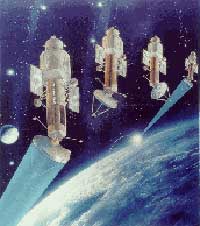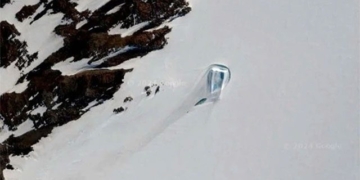“Star Wars” is no longer just a figment of imagination. Thanks to modern laser technology, the smoke, gunpowder smell, and the sharp sounds of explosions will soon be replaced by invisible beams of concentrated light.
 |
|
Laser Weapons (Photo: pravda) |
While still hundreds of kilometers above the ground, fighter jets equipped with laser weapons can easily destroy multiple ballistic missiles. The “energy-controlled” cannons effectively intercept missiles at the speed of light, heating and igniting the explosives from within, rendering them useless. This is not just science fiction from Star Wars.
The laser program began research over a decade ago and will soon become a reality. The U.S. military has tested laser tactics – the Tactical High Energy Laser project – to shoot down dozens of Katyusha rockets in the New Mexico desert. In 2004, the U.S. Air Force conducted initial tests of laser energy weapons.
Reality is beginning to unfold with every effort to apply lasers in warfare, reminiscent of Star Wars. To generate megawatts of laser energy sufficient to destroy a missile, hundreds of liters of toxic substances – ethylene, nitrogen trifluoride – are required. However, the biggest challenge is that after several shots, the laser energy must be replenished with new reactive materials. Another difficulty is transporting this large quantity of toxic substances either by air or across the battlefield, which may affect effectiveness if contaminated by dust and rain. Due to many unresolved issues, last year the U.S. military canceled its Tactical High Energy Laser project.
But don’t be quick to assume that laser weapons are being overlooked. The precise long-range striking capability of this type of weapon is highly appealing to the military, especially as American soldiers are fighting against guerrilla forces that appear and disappear. U.S. Navy Admiral Bradley Lott stated: “Infiltrating a crowd to eliminate one or two targets without creating smoke or noise; and being able to fire for extended periods without reloading – that’s the idea the U.S. Navy is particularly interested in pursuing.”
All laser energy operates in the same way: it stimulates certain types of atoms and light particles – photons – to emit. The light reflecting back onto the excited atoms further increases the number of emitted photons. However, unlike conventional light that radiates in all directions, the second wave of photons travels in a single direction and closely follows the first wave. The wavelength of laser light depends on the atomic medium. Once enough concentrated light is emitted, the target begins to ignite.
The first laser experiments in the 1960s used ruby crystals as the atomic medium, but this solid-state laser produced energy of only a few hundred watts – enough for eye surgery applications! However, to destroy a missile, millions of watts of energy are needed. After extensive research, military scientists discovered another type of laser called the free-electron laser (FEL), which does not use toxic substances or crystals. This type of laser naturally became the “star” of the U.S. national missile defense program known as Star Wars. Two American scientists, George Neil, the program leader, and Bob Yamamoto, are very confident that this laser can intercept missiles.
However, in practice, the FEL research has not yet yielded any success, and at scientific conferences, Neil always tries to justify the revival of his FEL research program with the help of sponsors. Eventually, Neil’s team succeeded in creating a “laser bullet.” Soon, this scientific team from the U.S. Department of Defense will need funding to develop a laser capable of reaching 100 KW of energy, sufficient to become a laser weapon.
Diên San


















































